Pope Leo XIII argues that the Church has the obligation and duty to educate man in religious affairs to reaffirm in him the dignity of his person and to care for the spiritual and physical health of the common laborer to protect him from the dangers of a modern and capitalist world. Mother Cabrini founded hospitals to ease the struggles of the Italian working man, established schools to educate and equip the future generations of Italian-Americans, and erected churches to address the Italian Americans’ deprivation of faith. Therefore, she enacted “justice through acts of charity.” Mother Cabrini’s frequent family visitations and the improvement of Italian parishes are acts of charity because they benefit individuals and address their immediate economic and spiritual needs, and her education of Italian immigrants and the construction of orphanages and hospitals are acts of justice because they demonstrate a communal attempt to address the Italian immigrants’ long term problems of social mobility. The scholarship of Humbert Nelli supports this correlation that educational and communal improvement through community institutions like the Catholic Church influenced socio-economic advancement. Further, Mother Cabrini’s mission efforts echo Pope Leo’s prescription of the intended role of the Church in Rerum Novarum. Mother Cabrini approaches secular issues such as poverty through adherence to religious institutions. Her worldview incorporates the spiritual and educational potential of an organized Church with the importance of the community as the domus for immigrant life and welfare.
The Preliminary Draft
Welcome all,
You see that looming creature in the featured image? If you are to be an adventurer on a grand quest, than that is your greatest adversary. In the context of the Ramonat Seminar, that foreboding colossus is the final paper. But alas!, there is no need to feel too stressed; for, the rough draft is here to our benefit.
First, I would like to briefly address what many students loath to admit: writing a rough draft is an immense academic privilege. The rough draft is the embodiment of the arguments and evidences of a research project, and – better still – the rough draft creates a conversation between student and professor in which the student can receive valuable criticism and commentary from the professor and should spur them, the student, forward to the completion of a greater final paper. In the world of research, the opinions of other learned peoples are the ultimate tool for an adventurer – to return to my original analogy!
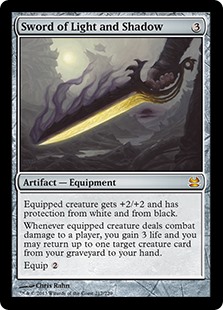
Let’s look at this Magic the Gathering card for further enlightenment. The sword is a powerful tool for any battle, but it contains both light and shadow. In this same way, a draft – at first – is full of shadows. The student has there delicate research efforts strewn about by their professor. This my have the initial effect of disheartening the student. But fret not! Every shadow exists because a source of light exists too. In this case, the criticism of the professor is the ultimate light. It reveals the flaws and shortcomings of the student’s research for the precise purpose of pushing the student toward improvement. If a student heeds these criticisms and commentaries well, then their research paper should only benefit.
Alright, so with this said I want to explain in brief my strategy in writing and revising my draft. My draft contains all of the information and evidence that are necessary for the existence of my paper; I wanted to ensure that my draft is the skeletal structure of my final paper. I am aware that it might be fraught with grammatical errors and incomplete citations (within reason because you still need to create a well-made draft!), and this is okay. Cementing a semester’s worth of research into careful words is a difficult task, so it is important to prioritize that your argument takes form when constructing the draft. After all, the goal of the draft is to give your professor an accurate portrayal of your research so that they can give you useful and constructive feedback about this argument.
For my paper revisions, the primary criticism was to include more analysis of primary sources – specifically to analysis more carefully the words and actions of Mother Cabrini. This is fine, this is a valid criticism and not one that overwhelms me. Why? Because I wrote my draft in such a way that my argument is already in form. I don’t need to scramble to figure out how to include more primary source analysis in my paper; I already known where I can introduce this analysis into my existing argumentative structure. Because I was careful to create a solid argument in the draft, I am now well equipped to revise and improve this very same argument. And any grammar/constructional errors are easy to remedy, all I need do is carefully follow the commentary of my professor while utilizing academic resources – such as Strunk and White’s The Elements of Style for grammar correction – to address these errors.
I want to keep this blog brief because I have a paper in need of revision, but I will leave you on this note. Revising a draft can be frustrating. Two perilous paths are open to the student: the first in which the student is too proud in their research to accept constructive criticism, and the second in which the student is too harsh on their research because they believe that the professor’s criticisms invalidate the existing strengths of their research. These are the Scylla and Charybdis of the world of revision. But luckily we are not so trapped as Odysseus because there are always better paths available.

More often than not both paths have some validity. The professor’s commentaries probably do reveal the shortcomings in your draft that need help, but there probably are also strengths in your draft that will benefit from further revision. There is no need to pull out your hair in frustration, nor is there a need to sacrifice your shipmates to the mighty Scylla. Armed with the new knowledge of reflection and the prior knowledge of all your hard research-work, have confidence in your original writing, learn how to improve it with the aid of your instructor, consult your peers for further help, and dive once again into the writing process. Grab the Sword of Light and Shadow and look towards the distant shores of Ithaka. We are almost there.
Ciao,
Noah
The Outline
(If you dare to peruse my outline, you will do well to click this: mother-cabrini-cst-outline)
Welcome all,
The process of creating an outline for a research paper is daunting and difficult. In the past I found myself trying to create a super clean outline that would satisfy my professor/teacher. I can now say that that approach is wholly incorrect.
An outline is for you, not your professor/teacher. Sure sometimes they are graded, but you should not write an outline merely to satisfy an academic requirement (although frequently your professor will require that you include a thesis, the structure of your argument, historiography. . . .which all are very helpful things!) My point is, if you write an outline for someone else it will be very difficult to turn this outline into a first draft.
(After all, what is an outline but the preliminary step towards completion of your first draft!!!)
My process of creating an outline is unique – and so should be everybody’s! I make sure to include a thesis and all of that important stuff, but when it comes to the structure of my outline I do what feels the most natural. I prefer to write an in-depth introduction and conclusion because – more often than not – these are the most difficult elements of writing a paper. If I take time to hash-out a good introduction while composing my draft, it will be easier to hit the ground running while transitioning from outline to first draft.
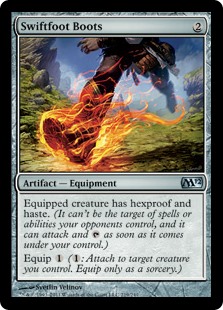
(This picture of a Magic the Gathering card serves no further purpose than to elaborate on my statement of ‘hit the ground running’)
Once I finish my introduction and conclusion, I fill up the body of my outline by selecting important quote from primary and secondary sources, and then I write my commentary about each quote. This is done with the specific purpose of allowing me to preserve my thoughts and make my first draft easier to write. I always intend on turning an outline into a first draft, a first draft into a revised draft, and a revised draft into something to be proud of.
My apologies if I rushed through this blog post, and if I threw a lot of information at you very quickly. I know you can handle it. Besides, I gotta run – there’s a first draft on the horizon!!
Cheers,
Noah
The Dorothy Day Symposium
Welcome all,
This week, in the continuing adventure that is the Ramonat Seminar, we had quite a large event on February 16th and 17th: the Dorothy Day Symposium. The 16th featured a private Ramonat meeting with Dorothy Day scholar and head editor of Orbis Books Robert Ellsberg, who then hosted a lecture to the public afterwards. The highlight of the 17th was a talk by the granddaughter of Dorothy Day, Kate Hennessey, who recently released a book titled Dorothy Day: The World Will be Saved by Beauty. Due to scheduling conflicts I was only able attend the events on the 16th, but that was still enough time to celebrate and analyze the life of Dorothy Day. In other words, more than enough time to understand the importance of the Symposium.

The private meeting with Robert Ellsberg was an enlightening experience. All semester we have been studying the origin of the Catholic Worker and how Day used the Catholic Worker to engage in political activism, and, unlike the communist and socialist movements, however, Day’s expression of political activism used Catholic non-violence and voluntary poverty to fight out against the injustices in the world. So it should come as no surprise that we were quite excited to exchange thoughts with Robert Ellsberg for an hour prior to his talk.
O, I suppose I should mention this: Robert Ellsberg, before becoming head editor of Orbis Books, was a member of the Catholic Worker and had actually met Dorothy Day.
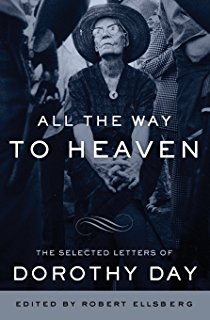
In 1975, Robert Ellsberg, then 19 years old, decided to drop out of Harvard University and join the Catholic Worker. Ellsberg stated that at this time he wanted to explore the world outside of the sheltered walls of the university and learn more about who he really was. This passion and enthusiasm, and a bit of being in the right place at the right time, led to Ellsberg becoming the managing editor of the Catholic Worker newspaper, and consequently meeting Dorothy Day. In fact, the five years that Ellsberg spent working for the Catholic Worker were the last five years of Dorothy’s life.
After working diligently on the Catholic Worker newspaper, Ellsberg decided to leave the Catholic Worker. His reason for doing so was that he believed it was the right time in his life to move on to something new . .. even though at the time he had no idea what that ‘new thing’ was. As fate would have it, Ellsberg would convert to Catholicism, get a Master’s in Theology at Harvard Divinity School, and spend the following years, up until the present, combing through Dorothy Day’s letters and writings whilst admiring her inspirational message.
In his following lecture, Ellsberg addressed one of the unique aspects of Day’s life – she was just as much a radical protester as she was pious Catholic; her radical expression of Catholicism took America by storm and led to the success and longevity of the Catholic Worker movement. In fact, when Pope Francis visited America in 2015, Ellsberg recalls, he drew attention to four great Americans revolutionaries – Abraham Lincoln, Martin Luther King Jr., Thomas Merton, and Dorothy Day. For this reason among many others, Dorothy Day is in consideration for canonization and sainthood.

The greatest takeaway from the time spent listening to Robert Ellsberg is that of perspective. Ellsberg recalls how Dorothy Day and Peter Maurin met in no extraordinary circumstances; they simply crossed paths, and the world was never the same. Similarly, Ellsberg himself had no idea that his simple decision to work for the Catholic Worker would cross his own path with that of Day’s and lead to his becoming the editor of Orbis Books and leading Dorothy Day scholar.
Life can happen so suddenly like that. Sometimes the most special moments of life happen in the simplest of fashions, and sometimes the worst moments happen in spectacular grandeur. The point is, stay true to yourself and keep moving forward in the direction that your soul tugs you in. Life will figure out the rest.
Huh. I now remember that I stumbled upon the topic of Mother Cabrini in quite a simple way; she was the saint of the day that I read on the iMissal Catholic app. Things keep getting more interesting. . .
Grazie,
Noah
Digging through Time
Benvenuti all’anno nuovo,
Welcome back to the Ramonat Seminar. Now we move into the spring semester, into the research and writing process.The theme for today is pivotal: the primary source. Often forming the basis of mot historical projects, primary sources allow researchers to assess the actions, ideas, and perceptions – among many other possibilities – of people who were alive during the time of study.
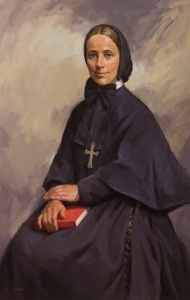
(Santa Francesca Saverio Cabrini)
To jog your memory, my research focuses on the communities of Italians living in America through an analysis of the missionary work of Mother Cabrini. Building hospitals, establishing schools, and spreading an intense faith, Mother Cabrini is a valuable case study of the efforts of the Catholic Church in America at the closing of the 19th century and opening of the 20th century.
So with this in mind, my latest task has been to locate the primary resources for this project and dig through them. I will now go over some of the sources I have encountered along the way and how I chose to deal with them.

Foreword: I want to make a small comment first for those who struggle to find primary sources. It is often helpful to first break your topic into its main components. For my research these are Italian-American immigration and the life of Mother Cabrini. So then I read through secondary sources on these two themes, often biographies or historiographic works, and wrote down any interesting sources that the author used in their work (remember to give these secondary sources credit!).This process actually helped me discover interesting newspaper articles about Italian-American immigration!
So here is a little insight into the many ideas that have been flowing through my mind and the sources that hold these ideas.
Newspapers
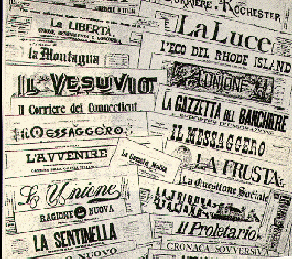
There seem to be few better ways to hear the opinions of late 19th century Italian immigrants about the state of urban american communities than to listen to what the Italian-Americans, or their contemporaries, said themselves. Thankfully newspapers do exactly this, they preserve the voice of historic actors and allow us researchers to reawaken these very same voices years later.
However, since newspapers are the direct words of historic actors, good researchers must be careful too sift through the biases of the author to recognize what can be used as factual evidence and what can be used as opinionated evidence. Since my goal was to find the perception of Italian immigrant communities from 19th century Italian immigrants, the opinions of Italian immigrants or their contemporaries were the facts that I was looking for.
For example, I read through two newspaper articles from the newspaper The Catholic World based in New York. The first was written by a Bernard Lynch in 1888 titled The Italians in New York and the second was written by a Franklin Laurence in 1900 titled The Italian in America: What he has been, What he shall be.
Both of these articles commented about the prevailing issues of Italian-American communities and the factors that led to a negative perception of Italians to the larger American society (and even stated what those negative perceptions were). The chief criticisms featured in these articles were that Italian-Americans lacked spirit, faith, and good education, and the re-invigoration of the Italian-American Catholic Church was often proposed as the best way to remedy these problems.
Side note: The dates of these two newspapers are very significant. Since Mother Cabrini first arrived in New York in 1889, the 1888 article reveals the state of affairs of pre-Cabrini Italian-American communities and the 1900 article assesses a post-Cabrini state of affairs (In fact, the second article makes direct reference to Cabrini’s Missionary Sisters of the Sacred Heart!)
Biographies and Autobiographies

Okay, so before I lose your attention I want to talk about the primary sources I read through that were written by Cabrini herself or by authors/historians who lived a generation after Cabrini’s death (in 1917).
The chief two I would like to speak about are “Immigrant Saint” written by Pietro di Donato in 1960 and “Travels of Mother Frances Xavier Cabrini” published by the Missionary Sisters of the Sacred Heart of Jesus in 1944. The former is one of the most complete biographies of Cabrini and often records her personal thoughts and reflections during her 67 year life and the latter is an extensive compilation of Cabrini’s personal travel letters written to her fellow Sisters from the years 1890-1906.
Although I want to keep the particularities of my research to myself and colleagues (since it is far from completion!), the ‘key find’ while reading Di Donato’s biography of Cabrini are Cabrini’s commentaries about her missionary zeal, the sad state of the impoverished Italian-Americans, and the overall struggles facing laborers in America. It is amazing to see the similarities between Cabrini’s first hand commentaries of American labor conditions and Pope Leo XIII’s elaboration of the dignity of the common laborer in his encyclical Rerum Novarum(published in 1891). I found similar comments while skimming through Cabrini’s travel letters.
Hmmmmm . . . it seems to be no mere coincidence that Mother Cabrini, following both her conscience and the advice of Pope Leo XIII, might be the first historic actor/actress to place the conception of Catholic Social Teaching introduced in Rerum Novarum into motion. I’m excited already to see where this goes.
Ciao i miei amici!
Noah
The Looming Shores of Research
Greetings to all,
I must admit, beginning a research project is always the most daunting task, a distant shore that seems always out to reach. At first glance, it seems impossible to find a topic that is both relevant and personally interesting; complex and yet discernible; simple, yet profound. For some, the stacks of the local library become like a home as they frantically search through page after page trying to find words that will stick.
For all of those who read through this post, I would like you to know that what was stated above was not my experience. And if panic does not suite you, it need not be yours also.
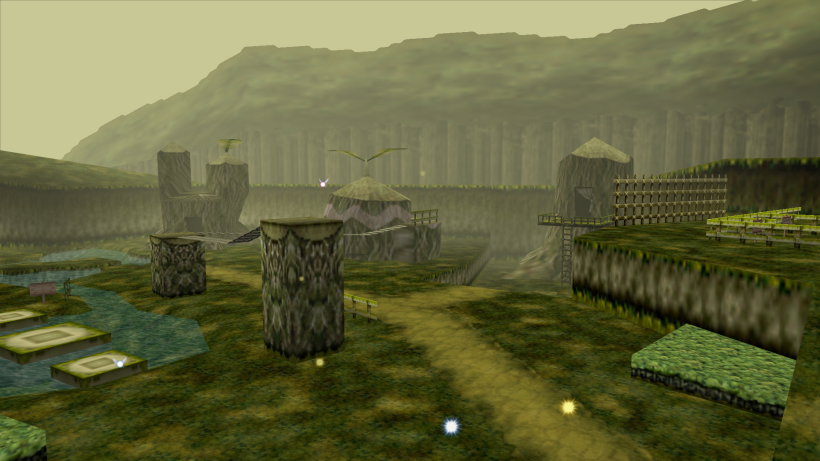
Relax. . .For me, the research process has always been natural; for if it was not, then it occurred to me that I was most likely already on the wrong track. Everyone has passion, a concept that may seem meaningless when the first secondary source bibliography due date is a few weeks away, but – trust me – passion is never meaningless. I have always been passionate about language, spirituality, and history. These flames have lit the path forward for my academic career, so I knew that in trusting them I could choose a research topic that best fit what I wanted myself to do.
In truth, the process of selecting a research topic was actually up to chance. One day while I was reading through biographies of Catholic saints on the iMissal application on my cellphone, I stumbled across a person named St. Frances Xavier Cabrini, also known as Mother Cabrini. A few facts stuck out to me in her brief biography: ‘Italian born,’ ‘American missionary,’ ‘brought faith to Italian immigrants,’ and ‘died in Chicago.’ That alone told me all I initially needed to know about her, Mother Cabrini was to be the anchor of my research project on American Catholicism in the 20th century.
. . . and you know what? I encountered her biography by just being myself, not even thinking about the secondary source due date that, at the time, loomed a mere two weeks away. How much more natural can a process be?
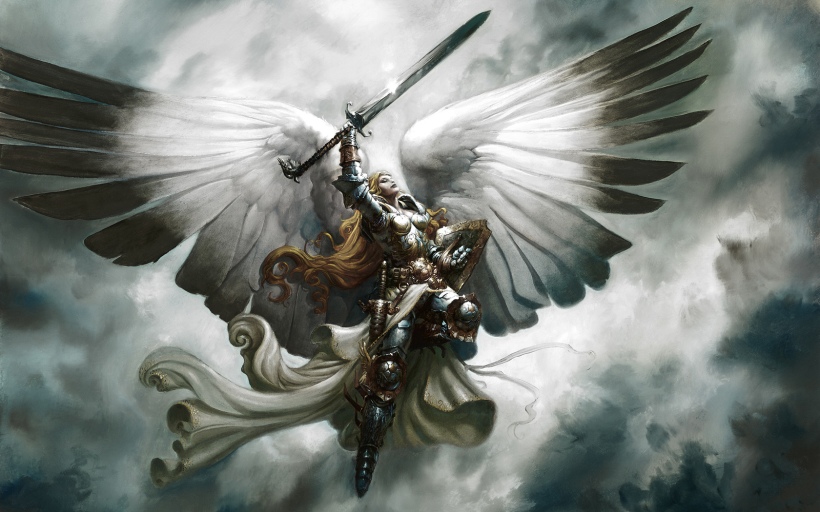
Passion had guided my hand and sure enough I gracefully arrived at a research destination. And thinking back to past projects I have done at Loyola University, I cannot recall a single time when my proud academic accomplishments were born of panic and worry rather than passion and courage. Under this banner I encourage all to hasten.
Jumping to speed, I become more and more pleased as I continue to read through the sources I have gathered surrounding Mother Cabrini and Italian-American communities. Our class about Dorothy Day for the Ramonat Seminar has covered the many facets of American Catholicism, . . .
. . . from strict hierarchical structures and opposition to Modernity, (https://nbeissel.wordpress.com/2016/09/11/the-spiritual-and-the-material/)
. . . to the Catholic Worker movement and the open-minded Vatican II Council, (https://nbeissel.wordpress.com/2016/10/11/dreams-of-a-white-rose/)
. . .and it is astounding to see all of these themes and histories form my understanding of my research topic. Italian-American communities were complex and varied, supporting socialism and communism through the efforts of vocal Italian nationalists and anarchists, but supporting also a quiet form of Christianity taken directly from Southern Italy through the pious actions of the Italian contadini (peasants). It was in this historic contextualization that Pope Leo XIII told a young Frances Xavier Cabrini to go “not to the East, but to the West” to do missionary work. The Catholic Church felt the distance between itself and its Italian communities, and Mother Cabrini and the Missionary Sisters of the Sacred Heart played a vital role in bridging that gap. As I am only now beginning to articulate, there were many forces at work in Italian communities at the turn of the 20th century and perhaps an analysis of Mother Cabrini’s life can highlight which of those forces she found the most pressing to grapple.

(Santo Francesca Xavier Cabrini, portrait)
And I know that my time spent learning in the Ramonat classroom will not have been spent in vain, as my head already swirls with connections to my research, relating Italian anarchism to the greater era of Socialism and Communism, and connecting the stereotypes of Italian laborers to the dangers of Social Darwinism that the Catholic Church recognized.
The road of research ahead may be long and daunting, with a Spring semester full of surprises on the horizon, but so long as I follow my passion in what I am doing and have confidence in my own abilities, I know that my research will take me to greater places. To the looming shores of research, and further still.
Ci vediamo,
Noah
Colors of Faith
Ciao a tutti,
This past Wednesday the we in the Ramonat Seminar, alongside various other students, had the pleasure of attending a lecture given by Professor Randal Jelks.
Artistic, moving, and passionate, Jelks’ lecture took us back to the early 20th century and dove head first into an analysis of faith and race as showcased in the storied lives of four prominent African-Americans: Ethel Waters, Mary Lou Williams, Muhammad Ali, and Eldridge Cleaver.
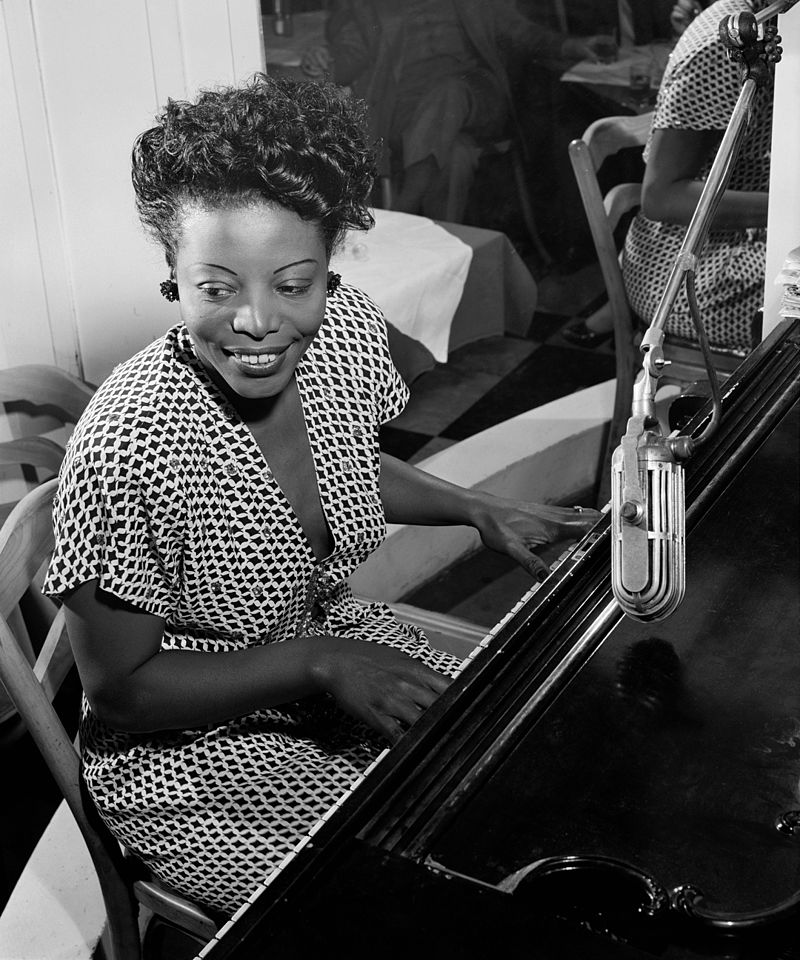
(Above: Mary Lou Williams)
A singer, a pianist, a boxer, and an activist – these four famous persons shared more than just a skin color. They shared passion. And to fuel each of their passions and dreams they used religion as a never ending source of inspiration and hope.
But how can we today assess their identities? Religion is a start. But that is not to say that the color of their skin was not important too. In fact, the more one attempts to separate the elements of their lives, the more these same elements join together and become entangled.
For example, as a blues and jazz singer, Ethel Waters participated in the Harlem Renaissance and became an integral player in the profound and harmonious expression of the artistic culture of African-Americans. But Waters then took advantage of her role as a cultural artist and utilized Christian gospel music to further her career. Waters’ covers of songs like ‘Stormy Weather’ and ‘His Eye is On the Sparrow’stand as the beautiful result of such a mixing.
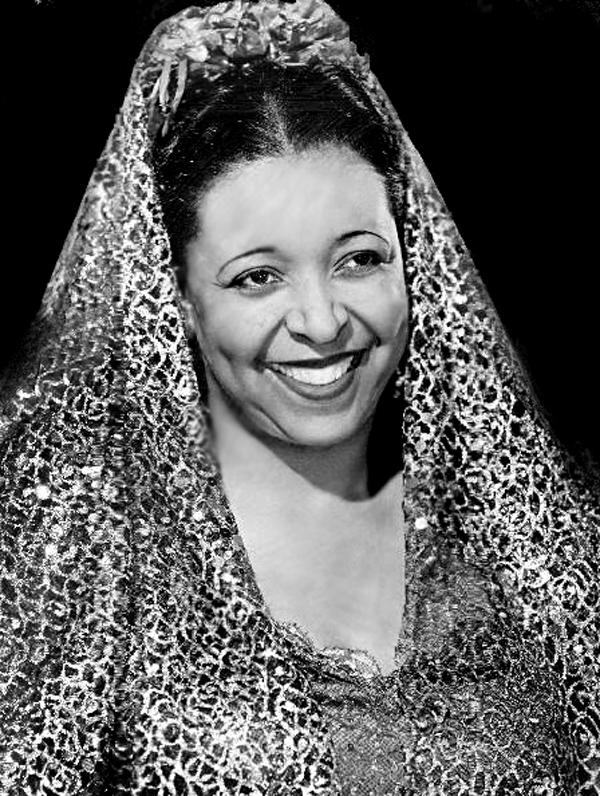
For Waters, then, both religion and race intermingled and it becomes difficult to determine whether race was an expression of her religion or religion was an expression of her race. Her gospel music highlighted the illuminating inspiration that Roman Catholicism gave her, but – at the same time – her platform of jazz and blues contextualized her religion in a uniquely African-American way. Her Catholicism was different than another’s because she used it as a means to express her race and soul; yet, it still was Catholicism. She, then, participated in two cultures (one religious and one racial), and laid both cultures as the foundation of the other. To be honest, such an analysis is beyond what I myself can cover in this mere blog alone.
Hopefully, however, I can and did give you a little taste of what Professor Jelks’ lecture was like. Unlike myself in this blog, Jelks’ pulled on personal memories of Waters, Williams, Ali, and Cleaver and re-imagined those memories by diving head first into the complex lives of each person. It truly was simultaneously an insightful historic perspective of religion in the African-American community and a touching exploration of the lives of four similar, yet very different, people.
The question of identity is difficult. Jelks’ tackled this question by juxtaposing race and religion for four prominent African-Americans. And in the process, he showed all of us the many different colors of faith that exist.
Cheers,
Noah
Dreams of a White Rose
Bienvenidos,
Today I find myself with pen heavy in hand and thoughts rapid in mind as I reflect on the weekend my colleagues and I recently shared at the White Rose Catholic Worker Farm in Missouri! The White Rose Catholic Worker Farm stands as the personification of a dream in our world, a mission with a standard of faith, self-sustainability, and love.
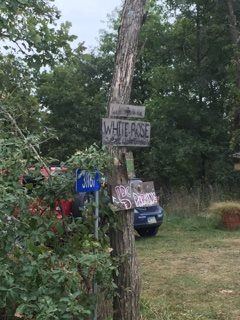
Last time I wrote a little piece about the significance of place, memory, and history. (Located here for curious ones: https://nbeissel.wordpress.com/2016/09/26/anchors-in-stone/) And once again I was able to see history come alive as I walked along the crisp grass and rugged dirt of the White Rose Catholic Farm.
The tradition of Catholic Worker farms arose when Peter Maurin and Dorothy Day dreamed of not only writing against the atrocities facing the poor of the world in their Catholic Worker newspaper, but also to put their words into motion. In an urban setting, the Houses of Hospitality were born so the people of the Catholic Worker movement could stand in solidarity and in poverty with the many immigrant and urban workers who formed the bottom/worker class of American society.
But moving away from the smog of the city, Maurin and Day dreamed also to address the rural plight. The cries and moans of the many simple, worn-out farmers and agricultural laborers that populated the United States. To promote community, simplicity, and faith, Maurin, Day, and the Catholic Worker established the Catholic Worker Farms.
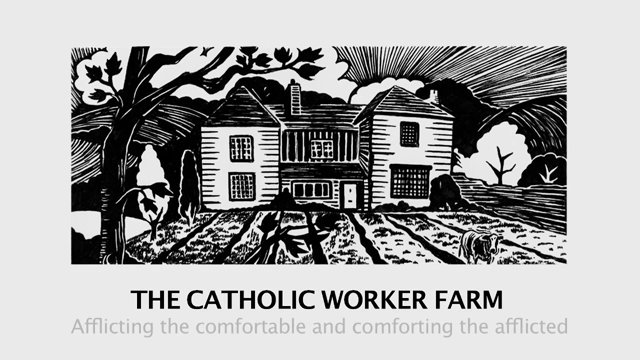
Okay, I’m glad we are up to speed. Not only that, but hopefully one can begin to imagine the thoughts racing through my mind as I was able to put into context all of my studies about the Catholic Worker Farms thus far.
Life at the White Rose – for the little weekend that I was there – was absolutely beautiful. Simplicity may be the best term to describe it, but even that falls out of favor.
The sensation of rejecting modern vices (technology, running water, and the daily cup of coffee to name a few), waking up and working alongside the sun, and gathering together to celebrate every meal . . . these are all parts of the greater experience at White Rose. Parts equally important as each other, but only a small glimpse into a story that is better experienced than heard.
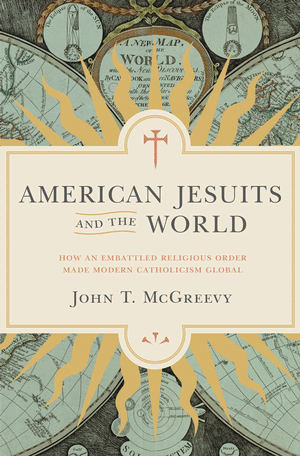
It is really hard to capture the history and significance of the White Rose Catholic Farm in a mere blog, I understand this.
However, maybe a reflection of the works of John McGreevy can aid us. In his book about American Jesuits, McGreevy recounts how the Jesuits were under constant pressure and exile throughout the 17th to 19th centuries. The paranoia of early Protestant colonization in America, the French Revolution, and the Roman Revolution of 1848-50 all encompass the struggles of European and American Jesuits as they fought to reestablish themselves as an intellectual religious order. But throughout these struggles they always held close to one thing – community.
I guess that is the true spirit of the Catholic Worker too. During the times of Maurin and Day the struggle was to aid the poor, the immigrants, the laborers, and to unite each other through faith. Today, the White Rose stands to combat violence and modern consumerism by holding itself to standards of active pacifism and an economic self-sustainability and to celebrate the beauty of life through faith.
Catholicism has always been about community. That is the dream of the White Rose.
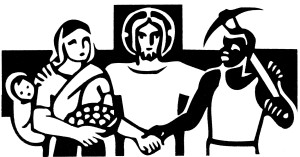
Gracias,
Noah
Anchors in Stone
The air holds still as I quietly pass through the city corridors. What did it look like then?, what were these people thinking? . . . how is it that though time has passed, the memories are anchored in the still standing stone and ever watching sky? At long last, I placed one foot in front of the other as I ascended a lonely stone staircase en la ciudad de Barcelona, España.
I breathed in . . . and then exhaled.
Closing my eyes, I felt the movement of hundreds and thousands of people before me. I felt as though I was out of place, in world that was no longer my own, experiencing a story that was not mine yet just as real as any other.
My eyes then opened.
With the light, memories too flooded into my mind. A world lost finally reconnected with mine. On this staircase once stood Cristobal Colon as he stood before la Reina Isabela I de España Católica. In other words, my person shared ground with Christopher Columbus, in the exact location where he told Queen Isabel I that he discovered what would become the “New World” . . . and change both “New” and “Old Worlds” forever.

If sharing my little story with you accomplishes anything, I hope that it begins to unravel the tapestry that binds both place and history together.
History, like a scent, an omen, or an emotion, lingers and clings to the location that once housed its life. History may pass and flow like the river of time, but the place names and locations it leaves behind can help us reconnect with our own past.
Just last week, my fellow scholars in the Ramonat Seminar and I had the pleasure to travel to the Back of the Yards, Chicago – the neighborhood and stockyards that forged Chicago into the legendary city that the Midwest marvels at today.
Take this photo of the sign on Packers Avenue for example. All visible record of the history of Packers Avenue is gone, today it stands as any other road in any other city. Only its name remains. However, if history is to be like solving a mystery, the name of the street is clue enough.
In the Back of the Yard, the meat packing industry provided jobs for the resident immigrants and civilians. And Packer Avenue . . . well it got its name for the fact that many of the packaging plants were located along its pavement.
Everything is different now, isn’t it? Before one looked upon a dusty road. Now it is as if one can smell the raw meat in the air and hear the shuffling of feet moving to and from work. With this rich history in mind, Packers Avenue becomes a focal point for people who want to move back through history and watch as Chicago emerges as the epitome of modernity and majesty.
Anchors in Stone. . .
Yeah, I think that is the whole point when it comes to the importance of places and locations. Reading in a book about Chicago’s Union Stockyard may inform you in a literal sense, but the lives of the people whom you study do not dance in your memory until you look upon, for example, a monument built in 1865. Sealed in this stone are the stories and struggles of every person who traveled beneath its gate from 1865 to the present date.
As a lover of history, I pray that our civilization never loses the esteem it has given to historic place names, monuments, and sites. Even as a student, I grew heavy in heart when I moved out of my freshman year dorm. I knew I would miss all of the memories that I forged in that building. But after much consideration, a smile appeared on my face, as I knew that the building would stand longer still, preserving in its walls both emotion and memory.
Cheers,
Noah Beissel
The Spiritual and the Material
Hanging mid-air in a balloon basket, Socrates claims that the perspective above the ground helps him suspend his judgments and allows him more ample time to ponder the world. After much thought, Socrates condemns the desperate Strepsiades for believing that the nature world was controlled by the gods. The gods may make not their presence known, but – swinging arrogantly in a basket – Socrates observes the workings of nature as the truth, and states that the weather is not the act of Zeus but of the Chorus of Clouds.

Well, that is at least the story as according to Aristophanes, writer of the satirical play The Clouds and coincidentally both Socrates friend and greatest intellectual rival.
(Oh and welcome back to my blog)
The satirical picture Aristophanes paints of both Socrates and his logical/rational style of philosophy is indicative of the eternal struggle between religion and morality and science and actuality. In truth, Socrates desired only to base his worldview on that which he could both observe in the physical world, or actions of others, and rationalize with his mind. In order to use such reason and logic to address life’s many qualms, Socrates resorted to elenchus, or the Socratic Method (which would serve as the question-centered inspiration for the Scientific Method). Any issue can be answered so long as the person in question is willing to answer a series of questions. If answered truthfully, the true moral compass and justice of that person will help them arrive at the conclusion to their original issue. Plato’s Symposium displays the use of elenchus to a magnificent extent when pondering the philosophic meaning of love.
. . .
But that is not the side of Socrates that Aristophanes depicts in The Clouds, is it?
You see, to a conservative intellectual such as Aristophanes, Socrates’ methods of rational philosophy challenges the old order of belief in the gods and society as a whole. Socrates insatiable curiosity to ask questions and unravel answers frightens Aristophanes. Disgusts him. As such, Aristophanes uses The Clouds to expose the character and dangerous potential that Socrates really possesses. Aristophanes, by placing Socrates in a basket mid-air to ponder the origin of the weather, paints Socrates as a arrogant scientist who is so self absorbed in his own ‘brilliance’ that he appears crazy and unruly to the rest of the world. Socrates is threatening the tradition of Athens and of the Greek pantheon – a fact which does make him crazy to Athenian society.

But the real problem with Socrates’ new order of thought for Aristophanes is not that he falls in love with intellectual curiosity and the use of logic, but the social consequences that such a movement can have.
And that brings us to a more contemporary battleground for religion and science, Catholicism and Darwinism.
When Darwin wrote the Origin of Species, the stage was set for a great moral battle. But, despite popular belief, the combatants were not scientists and theologians nor was the battleground that of evolution versus divine creationism. The debate over evolution in the Church, which split the Church into moderate and progressive branches, did exist, but the real adversary was the social consequences that the ‘survival of the fittest’ clause would have.
You see, Aristophanes’ Socrates had two capable students – the Just Argument and the Unjust Argument. The Just Argument was the pillar of tradition, a physically attractive man who exuded with confidence, as a result of his well rounded mental and physical education. The Unjust Argument however, as an arrogant figure, rejects the traditional education of Athens and instead embraces logic and the Socratic method in order to navigate through life’s mysteries.
What happens when these two come to debate, you ask? Well, The Unjust Argument is the victor. Rather than contribute anything to their debate himself, the Unjust Argument gives the Just Argument the opportunity to speak first in their debate, and then proceeds to tear apart the Just Argument’s rhetorical style and argument. Deceit and trickery defeat justice and tradition. The teachings of Socrates did not contribute to Athenian society . . . they merely critiqued and scolded its traditions.
And to make matters worse, the character Pheidippides (who subsequently received his education from the victorious Unjust Argument) used his new found skill of rhetorical reason to dodge creditors, beat his father, and become otherwise consumed in his ‘ever-increasing’ intellect.
Aristophanes’ Clouds may be a satirical work, but can we not find its message true in the Catholic-Darwinism episode? Darwin’s scientific argument of evolution, which is based on observation and reason, is not terribly problematic for the Church. In fact, some theologians such as Dr. Zahm embrace evolution as wholly explainable by scripture, tradition, and the teachings of Christian intellectuals such as Augustine and Aquinas. However, the problem is that social Darwinism, much like the Socratic Method for Aristophanes, could be used to justify immoral and unjust actions. The Unjust Argument led to the violent, arrogant, and dangerous action of Pheidippides. Similarly, the doctrine of social Darwinism would led to ‘scientifically-rooted’ racism and the creation of a shattered moral society.
Okay, pause.

Awesome, I am glad that we are still able to relax and concentrate.
So, when it comes to the relationship of religion and science, it appears that spirituality attempts to maintain a moral foundation which the ever-changing observations and understandings of our own material world constantly threaten.
Nicolaus Copernicus argues that the sun is at the center of the universe rather than the Earth? Okay not good, does that then mean that humans are no more special than anything else in the world? If are origins are potentially not so divine, how can we uphold a just and true moral compass? (https://en.wikipedia.org/wiki/Nicolaus_Copernicus#Theology)
Galileo Galilei, by further improving the observational methods of astrology and giving more validation to Copernican theory, also faced heresy at the hands of the Church. (https://en.wikipedia.org/wiki/Galileo_Galilei)
And then Charles Darwin, who as previously mentioned, simultaneous challenged the notion of human uniqueness and set in motion the path to scientific racism with his groundbreaking theory of evolution. Again, that poses a major threat to the seemingly ‘divine origin’ of human behavior and ideal morality. (https://en.wikipedia.org/wiki/Charles_Darwin)
Yet, none of these great scientists were naturally antagonistic to the faith of Catholicism nor the moral compass that it supported. But, what they did do, was make the Church reassess and question its own stance. And that is not necessarily a bad thing. As the scientific community continues to discover new and efficient ways to understand the word around us, the Church – and religion in general – must rise to the challenge and reassert how the moral and just nature of humanity fits within the new world that science has discovered.
Even today, with the emergence of the transgender identity on a scientific scale (being that a male body can be born with a female brain and vice versa), the Christian Church is forced to situate the new phenomenon within its existing guidelines on how a morally sound human should behave in order to best honor God.
Science and Religion are no more and no less antagonistic than progress and tradition at times – both exist in the same world and are not going away any time soon. They will need to take time to figure out how to best understand each other, however.
Grazie per ascoltarmi,
Noah Beissel









